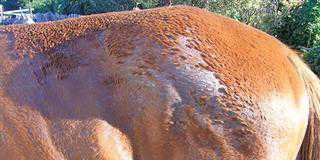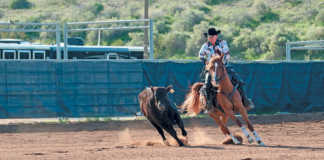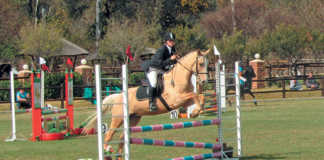A laser beam is monochromatic – the wavelength is a single band. This means that it has ‘coherence’: the light moves in a straight line, and, unlike normal light, does not get wider the further away from the source it travels. Various forms of laser therapy can be used to boost a horse’s natural anti-inflammatory response. This is because laser therapy is said to stimulate the release of adenosine triphosphate (ATP), the major carrier of energy to all cells. Increases in ATP allow cells to use nutrients faster and get rid of waste products more quickly.
This therapy refers to a cold laser – a hot laser is used by surgeons. In cold laser therapy, there is no direct contact between the crystal that emits the laser light and the injured area. Low-level laser therapy (LLLT) was first used on animals in the early 1980s. But it has since been reported that light therapy using LEDs produces many of the same benefits as LLLT, but at lower cost and more safely. LEDs do not deliver enough power to damage the tissue, but deliver enough energy to stimulate the body to heal itself.
The tissues and cells of the body absorb light at specific wavelengths; those in the red and infrared spectrum are most effective for healing. Visible red light is absorbed by the skin layers efficiently and is best for treating wounds and infections. Infrared light penetrates to a deeper level and is used to treat bones, joints and muscles.
Hormones
Laser therapy dramatically increases the levels of the horse’s natural anti-inflammatory hormones, such as cortisol and serotonin. These reach up to 300% of normal levels four hours after a treatment and then decrease to normal levels within three to four days. Laser therapy also increases collagen build-up. Collagen is the most common protein found in the body and is essential for repairing damaged tissue and replacing old tissue.
It has been reported that by increasing collagen production, laser treatment ensures less scar tissue at the damage site.
When laser helps
You can use laser therapy in the following instances:
- Nerve compression/bruising. After a fall or kick, laser helps the body remove dead blood cells in the area of the bruise.
- Open and post-surgical wounds. Laser helps minor cuts and scrapes, as well as surgical wounds. The scarring is diminished considerably.
- Tendon and ligament injuries. The sooner you use laser, the better the healing.
- Pain reduction. Because the laser helps with movement in the mitochondrion, the cells mop up excess fluid, minimising pressure on the nerves. This is what pain is – pressure on nerves.
Sources: Biomechanics (K Blignault) and Laser 101, Stoneleigh College NVQ Qualification Study Manual.













